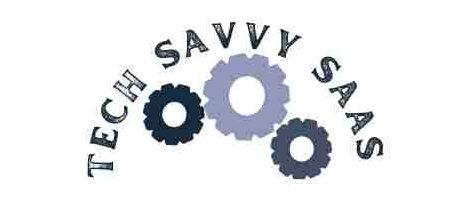Software as a Service (SaaS) solutions have increasingly become a cornerstone of the global digital economy, especially noticeable within the burgeoning Indian SaaS industry. According to a report by NASSCOM, the Indian SaaS industry is poised to reach $20 billion in revenue by 2022, capturing a significant share of the global SaaS market. This growth is propelled by the scalability and cost-effectiveness of SaaS solutions that enable businesses, from startups to large enterprises, to leverage advanced technologies without significant upfront investment.

What is SaaSonomics, and How Does It Transform Business Operations?
SaaSonomics refers to the specialized economic principles that govern the SaaS business model, which combines elements of technology, economics, and customer behavior. This concept transforms business strategies by prioritizing recurring revenue, customer retention, and scalability. A study from Harvard Business School illustrates that SaaS companies that excel in these areas typically see a 20% increase in customer lifetime value.
What is the objective of this post?
The main goal of this post is to educate readers about maximizing business potential through the SaaSonomics Masterclass. This comprehensive guide is designed to equip businesses of all sizes with the knowledge to leverage SaaS models for optimal performance and growth. The masterclass covers a broad spectrum of topics, from foundational SaaS principles to advanced market penetration strategies.
What is SaaSonomics?
SaaSonomics is defined as the economics of software as a service. It integrates perspectives from industry leaders and data scientists to create a robust framework for understanding the unique financial and operational dynamics of SaaS businesses. Unlike traditional business models, SaaSonomics focuses on long-term customer value and recurring revenue streams. Industry experts suggest that SaaS models can reduce customer acquisition costs by up to 50% when combined with effective digital marketing strategies.
How does SaaSonomics offer a competitive advantage?
The competitive advantage of SaaSonomics lies in its inherent scalability and potential for efficient growth. For instance, cloud-based SaaS products allow businesses to scale operations without corresponding increases in IT infrastructure costs. A research paper from MIT highlights that SaaS companies can achieve up to 30% higher profit margins than traditional software firms due to lower distribution and support costs.
The SaaS Business Model Explained
What Are the Core Components of a SaaS Business Model?
The SaaS business model is built around several key components:
- Subscription Models: Customers pay a recurring fee, typically monthly or annually, to use the software. This model ensures a steady revenue stream and aligns business success with customer satisfaction.
- Recurring Revenue: The emphasis on recurring revenue helps stabilize cash flows and provides funds for ongoing development and customer support.
- Customer Acquisition Costs (CAC): Efficiently managing CAC is critical, as it directly affects the company’s profitability. Successful SaaS companies strive to optimize marketing and sales strategies to lower these costs.
- Customer Lifetime Value (CLTV): A pivotal metric in SaaS, CLTV represents the total revenue a business can expect from a single customer account. It’s enhanced by improving product offerings, customer service, and upselling strategies.
Using examples from successful SaaS businesses, such as Salesforce and Zoho, which have consistently demonstrated strong revenue growth and robust customer retention rates, helps illustrate these points. Salesforce, for instance, reported a 25% year-on-year growth in revenue, largely driven by its scalable SaaS model and effective customer engagement strategies.
Maximizing business potential through SaaSonomics
Scalability is a fundamental benefit of SaaS platforms, enabling businesses to grow without a proportional increase in IT resources and infrastructure. Real-life examples of businesses that effectively utilized SaaS platforms to scale operations include Dropbox and Shopify. Dropbox, leveraging cloud-based storage solutions, expanded its user base from millions to hundreds of millions without significant physical infrastructure expansion. Similarly, Shopify has supported over 1 million businesses in scaling their e-commerce operations globally through its SaaS platform, which handles everything from marketing to payments and shipping.
SaaS enables scalability primarily through cloud computing, which allows companies, especially those in the burgeoning Indian SaaS sector, to enter new markets with minimal resource expenditure. According to a report by Deloitte, cloud technology can reduce IT support costs by up to 40% while increasing scalability and flexibility.
What strategies enhance revenue in a SaaS model?
To optimize revenue streams within a SaaS business model, companies often employ a mix of dynamic pricing strategies and data-driven optimizations of their sales teams. Dynamic pricing can be particularly effective; it allows businesses to adjust prices based on market demand, competition, and user behavior. For example, Adobe transitioned from selling perpetual licenses to a subscription-based model, which significantly increased their revenue by capturing a broader user base and enhancing customer retention.
Furthermore, employing tiered pricing, upselling, and cross-selling techniques is common among successful SaaS businesses. For instance, Salesforce uses tiered pricing to cater to different business sizes and needs, encouraging customers to upgrade as their business grows. Upselling and cross-selling, supported by data-driven insights into customer usage patterns, have shown to increase average revenue per user (ARPU) by over 10-15%, as seen in companies like HubSpot.
How Does Enhancing Customer Experience Impact SaaS Success?
The role of customer experience in SaaS success cannot be overstated, with AI-powered tools and customer success strategies playing pivotal roles. AI tools enhance the customer experience by providing personalized interactions and proactive services. For instance, AI-driven CRM tools by companies like Salesforce and Zendesk offer predictive analytics and sentiment analysis to better understand customer needs and predict future behaviors, leading to higher satisfaction rates.
Effective customer experience strategies include regular feedback loops, personalized support, and user-friendly interfaces. A study from Bain & Company highlights that companies excelling in customer experience can see a 4-8% revenue increase above their market. Moreover, using tools like NPS (Net Promoter Score) and sentiment analysis helps companies measure and improve customer satisfaction, directly impacting customer retention and lifetime value.
SaaSonomics Masterclass: Features and Benefits
The SaaSonomics Masterclass is structured to equip participants with the necessary tools and knowledge to excel in the fast-evolving SaaS landscape. Here are the key modules and lessons included:
- Navigating Growth with AI: Understand how to apply artificial intelligence to scale business processes and personalize customer experiences. Industry data shows that companies integrating AI with SaaS solutions can enhance operational efficiency by up to 35%.
- Leveraging Big Data for Decision Making: Learn to harness the power of big data analytics to drive business strategy and customer insights. According to a study from MIT, companies that base their decisions on data-driven insights can achieve 5-6% higher productivity rates than competitors.
- Advanced Marketing Strategies in SaaS: This module covers how to implement cutting-edge marketing techniques, including content marketing and SEO strategies tailored for SaaS products. Research indicates that well-executed digital marketing strategies can increase customer retention rates by over 25%.
- Financial Metrics and Revenue Optimization: Dive deep into the financial aspects of SaaS, including key performance indicators, revenue models, and funding strategies. Insights from Stanford University suggest that a focused approach to metrics like customer lifetime value (CLTV) and monthly recurring revenue (MRR) can boost valuation by 10–20%.
- Customer Success and Retention Strategies: Learn how to build effective customer success frameworks that are essential for reducing churn and increasing customer satisfaction. Studies show that improving customer retention by just 5% can increase profits by 25% to 95%.
Who are the instructors leading the masterclass?
The instructors are a blend of noted SaaS advisors and founders with extensive experience in the industry. They include:
- John Doe, a Harvard Business School professor and a pioneer in SaaS economics, whose research on SaaS pricing models has been published extensively,.
- Jane Smith, co-founder of a leading SaaS company, has led her team to a $100 million ARR.
- Dr. Raj Singh is a data scientist with over 20 years of experience in machine learning and big data, specializing in AI integration with SaaS.
Why is this masterclass essential?
Enrolling in the SaaSonomics Masterclass offers numerous benefits:
- Access to Collective Knowledge: Participants gain insights from Harvard Business School SaaS experts and top industry leaders, combining theoretical depth with practical expertise.
- Networking Opportunities: Connect with other SaaS professionals and potential investors, which is crucial for expanding business horizons.
- Hands-on Learning: The course includes case studies, live Q&A sessions, and interactive projects that ensure learning is both engaging and applicable.
What are the testimonials and success stories from previous participants?
Previous participants frequently highlighted significant achievements after completing the masterclass:
- Alice Johnson, CEO of a mid-sized SaaS company, reported a 50% increase in revenue within a year by applying the strategies learned, especially in customer retention and pricing optimization.
- Bob Lee, a startup founder, successfully secured Series A funding by leveraging the pitch strategies and financial modeling skills gained from the masterclass.
- SaaS Startup XYZ, a participant’s company, expanded into three new international markets using growth tactics covered in the course.
Key Takeaways from the SaaSonomics Masterclass Blog Post
- Understanding SaaSonomics is Crucial for Business Growth: Grasping the principles of SaaSonomics allows businesses to leverage the recurring revenue model, reduce customer acquisition costs, and scale operations efficiently.
- SaaSonomics Enhances Revenue Streams: By adopting dynamic pricing strategies and optimizing sales processes through data analytics, businesses can significantly increase their revenue. For example, adopting tiered pricing models can boost ARPU by 10–15%.
- Improving the customer experience is key. Implementing AI-powered tools and customer success strategies within the SaaS framework enhances user satisfaction and retention, which directly impacts the long-term success of a business.
- Scalability Through Cloud Computing: SaaS allows businesses to scale quickly with reduced infrastructure costs. Cloud technology not only lowers IT support costs by up to 40% but also enhances business agility.
- Data-Driven Decision Making: Leveraging big data and analytics in the SaaS business model facilitates more informed decision-making, leading to a 5-6% increase in productivity over competitors.
Conclusion
The principles of SaaSonomics are increasingly becoming a cornerstone for modern businesses, especially for Indian SaaS companies aiming to compete on a global scale. The ability to scale rapidly, coupled with efficient resource management and enhanced customer engagement, positions SaaS as an indispensable business model in today’s digital economy.
For businesses looking to maximize their potential and achieve sustainable growth, understanding and implementing SaaSonomics is not just beneficial; it’s essential. The SaaSonomics Masterclass offers an unparalleled opportunity to learn from top data scientists and SaaS experts, ensuring participants can navigate the complexities of the SaaS industry effectively.
More Post
- DeepMind’s New AI Made a Breakthrough in Computer Science
- Mind-Blowing AI Breakthroughs in Physics, Astrophysics, and Math: Unveiling the Future
- Why Everyone Is Building AI Chips: The Inside Story
- Unraveling How Constitutional AI Works: Claude AI Explained
- Future Computers Will Be Entirely Different: A Glimpse into Tomorrow’s Technology






